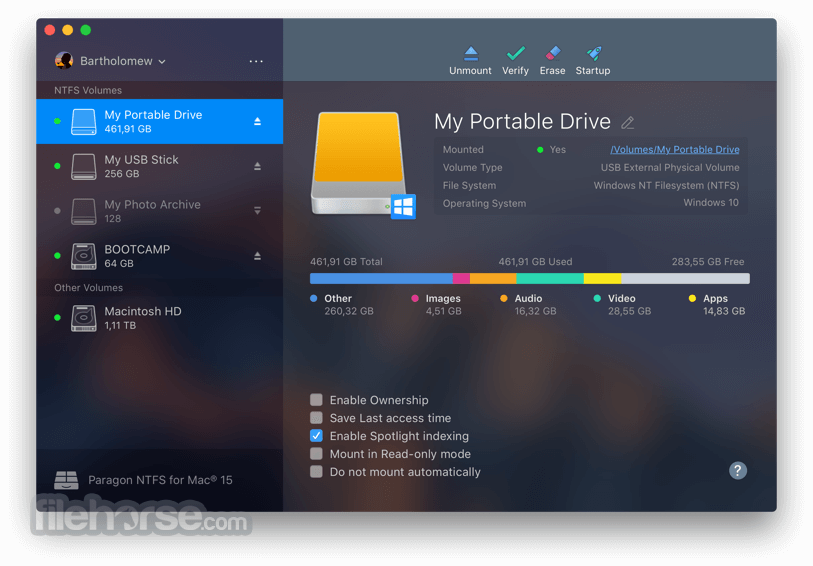
- #Malwarebytes for mac os x el capitan cracked#
- #Malwarebytes for mac os x el capitan install#
- #Malwarebytes for mac os x el capitan software#
- #Malwarebytes for mac os x el capitan torrent#
Pirritīack in April 2016 OSX/Pirrit was apparently hidden in cracked versions of Microsoft Office or Adobe Photoshop found online.

Malwarebytes claims the malware could have been circulating since OS X Yosemite was released in 2014. X-agentīack in February 2017 X-agent malware was discovered that was capable of stealing passwords, taking screenshots and grabbing iPhone backups stored on your Mac.
#Malwarebytes for mac os x el capitan install#
The best way to avoid falling foul to such an attempt in the future is not to respond to emails that require you to enter a password or install anything. OSX/Dok was targeting OS X users via an email phishing campaign. The attacker could gain access to all victim communication by redirecting traffic through a malicious proxy server, there’s more information about how the attack worked Apple has since revoked that developer certificate and updated XProtect, it’s malware signature system.

Because the malware had a certificate, macOS’s Gatekeeper would have recognized the app as legitimate, and therefore not prevented its execution. It is likely that the hackers accessed a legitimate developers’ account and used that certificate. OSX/Dok was even signed with a valid developer certificate (authenticated by Apple) according to CheckPoint’s blog post. It isn’t exactly malware, rather it’s what we call a Potentially Unwanted Program, which piggybacks on to your system via bundles of other software. Mac Auto Fixerīack in August 2018 Mac Auto Fixer caused some concern among Mac users as it started popping up on Macs. Since it’s connected to Chrome we also recommend that Mac users choose a different browser.ĬookieMiner Mac malware here. Unit 42, the security researchers who identified it, suggest that Mac users should clear their browser caches after logging in to financial accounts. It was able to steal a users password and login information for their cyberwallets from Chrome, obtain browser authentication cookies associated with cryptocurrency exchanges, and even access iTunes backups containing text messages in order to piece together the information required to bypass two-factor authentication and gain access to the victim’s cryptocurrency wallet and steal their cryptocurrency. The CookieMiner malware that could steal cybercurrency was discovered at the end of January 2019. This malware was detected in 2018 and can intercept encrypted web traffic to inject ads. OSX.SearchAwesome is a kind of adware that targets macOS systems.
#Malwarebytes for mac os x el capitan software#
The cryptocurrency mining software would attempt to use your Mac’s processing power to make money. This was a cryptocurrency miner that was distributed via a cracked installer for Ableton Live. Known as ‘Wiper’ malware this was the first of its kind on the Mac. It turned out that rather than the purpose of ThiefQuest being to extort a ransom, it was actually trying to obtain the data. It was initially thought to be the Mac ransomware – the first such case since 2017, except that it didn’t act like ransomware: it encrypted files but there was no way to prove you had paid a ransom and no way to subsequently unencrypted files.
#Malwarebytes for mac os x el capitan torrent#
Mac ransomware ThiefQuest / EvilQuest could encrypt your Mac (Updated), was Ransomware spreading on the Mac via pirated software found on a Russian torrent forum. Or you might see a warning that you have been infected with a number of viruses inviting you to use an app such as Advanced Mac Cleaner, Mac Adware Remover or Mac Space Reviver. You might see a pop up suggesting that you don’t have software to open an app, for example, offering to help you locate such an app on the web. Malwarebytes uses the name FakeFileOpener to describe apps that advertise PUPs (Potentially Unwanted Programs). This could be an attempt to run concealed Python or a shell code, for example. These accounted for more than 80% of cases, but rather than being one rampant case of malware, this is Malwarebytes name for any detection that was deemed to be suspicious behaviour. Based on Pirri and known as GoSearch22 it has been specially compiled for Apple’s ARM platform. There is already adware targetting the M1 Mac.

What you need to know about Silver Sparrow Mac malware. It is unclear how many of these are M1 Macs. But worryingly, according to Malwarebytes, Silver Sparrow has already infected 29,139 macOS systems in 153 countries, most of the infected Macs are in the US, UK, Canada, France and Germany. The malware is dubbed Silver Sparrow, and uses the macOS Installer Javascript API to execute commands.Īt the time of writing it’s unknown to what extent Silver Sparrow poses a threat. Security firm Red Canary discovered malware targeting Macs equipped with the M1 processor.


 0 kommentar(er)
0 kommentar(er)
